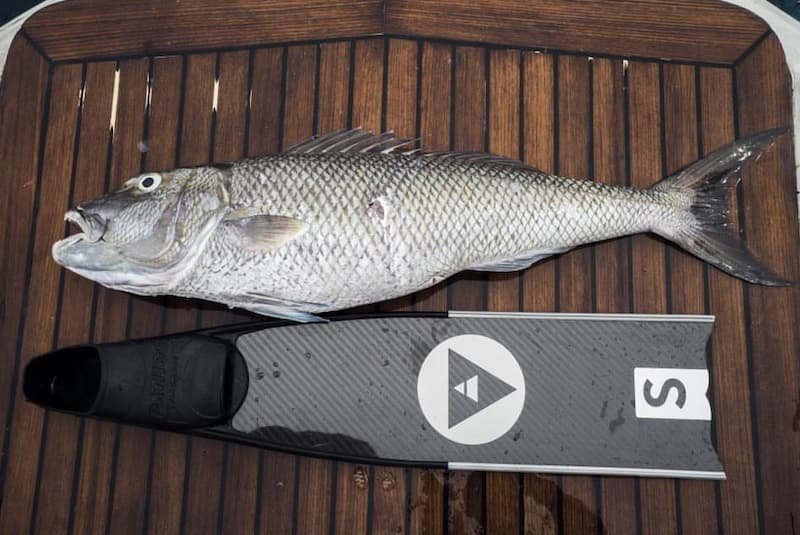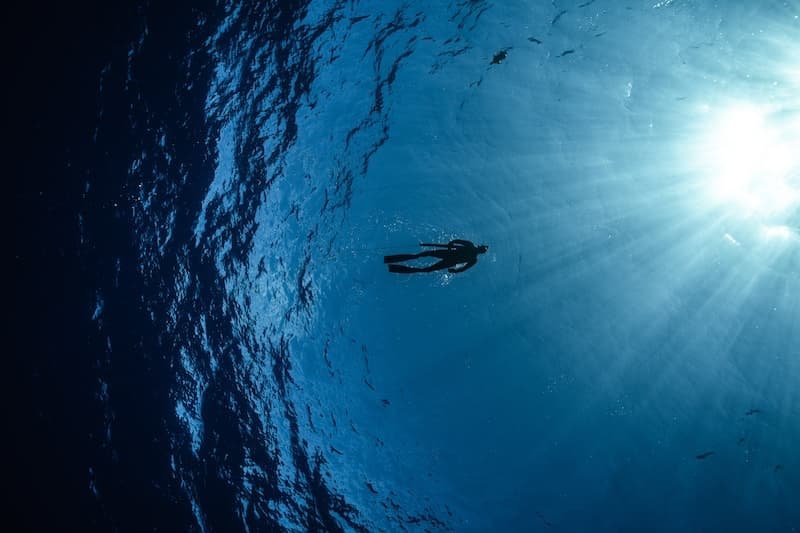Many spearfishers worldwide underestimate the importance of freediving courses for their sport. However, they are mistaken. These courses offer valuable opportunities to enhance diving skills, ensure safety, and ultimately increase catch success.
Prior to enrolling in any freediving courses, I had been actively spearfishing for several years during my high school days in Florida. My dives ranged from 15 to 20 feet, searching for snapper, lobster, and grouper using Hawaiian slings and pole spears. As I progressed, I ventured deeper, eventually using a speargun and reaching depths of around 60 feet, feeling confident in my abilities.
However, my perspective shifted when I discovered the opportunity to take freediving courses. I enrolled in a class with Freediving Instructors International, a decision that has since shaped my journey significantly. Initially, I believed I had already surpassed the requirements for a level one course. Yet, I quickly realized there was much more to learn.
The course delved into the intricacies of human anatomy and physiology during deep dives, emphasizing techniques for body protection, streamlined efficiency, and proper kicking cycles. Crucially, I gained invaluable knowledge about rescue scenarios and prioritizing safety, which becomes especially crucial as one pushes their physical limits in freediving.
Over the years, I've had the privilege of diving with people from diverse backgrounds across the globe, testing our physical abilities in various challenging environments. I've come to appreciate the importance of diving with properly trained buddies, understanding that freediving, like spearfishing, is inherently a team sport. Through formal instruction and continuous practice, my dive buddies and I have cultivated a culture of safety and proficiency essential for enjoying our shared passion responsibly.

Throughout my experiences spearfishing in locations such as Maui, the Hawaiian Islands, Florida, Fiji, California, and Indonesia, I've observed a consistent pattern: the most successful spearos are those who prioritize safety and skill development. These spearos consistently bring in the most fish and provide the most sustenance for their tables.
What sets them apart is their commitment to training. Whether they have completed a basic level one course or pursued more advanced training, such as competitive freediving, their dedication to improving their skills is evident. This often leads them to develop a passion for freediving itself.
The difference between spearos who have undergone formal training and those who haven't is striking. There's a noticeable level of proficiency and understanding that comes from structured instruction, which translates directly into increased success and safety in the water.

When delving into the realm of freediving courses, it's important to recognize the varying depths and formalities they offer. Personally, I endorse Freediving Instructors International (FII) for their comprehensive curriculum. Under the guidance of renowned instructor Martin Stepanek, whose accolades include numerous world records, FII stands as a beacon of excellence in freediving education.
In an FII level one course, and extending into the more advanced levels, participants gain an in-depth understanding of the physiological processes occurring within the body during freedives. This includes a detailed examination of muscle engagement and the anatomical aspects relevant to freediving. Essential breathing techniques, such as proper breathing-up and recovery breaths, are also covered extensively.
Moreover, participants delve into the intricacies of physiological responses to muscle engagement and disengagement, alongside mastering techniques for effective equalization. Proper kicking techniques are emphasized to avoid inefficient movements that could compromise dive times.
Freediving courses also offer insights into selecting appropriate equipment, focusing on gear that enhances streamline efficiency while cautioning against choices that may hinder performance. By the end of the course, participants are equipped with the knowledge and skills needed to optimize their freediving experiences while ensuring safety and efficiency in the water.

When it comes to rescue and safety procedures in freediving, one of the paramount skills emphasized in courses is the ability to respond to emergencies efficiently. This aspect resonates strongly with most freedivers, including my own students and peers from past courses.
A key takeaway from basic courses, such as a level one certification, is mastering streamlined and effective rescue techniques. This involves closely monitoring your dive buddy throughout their descent, noting any signs of physical distress or stress levels they may be experiencing. Understanding your buddy's capabilities, including their dive times and depths, is crucial in ensuring their safety.
Most rescue scenarios tend to occur above water, primarily involving instances of Loss of Motor Control (LMC) or blackouts. LMC refers to a situation where a diver experiences a loss of muscle control while remaining conscious. Blackouts, on the other hand, involve a loss of consciousness while the diver is still breathing. Recognizing the signs and symptoms of these conditions and knowing how to respond swiftly and appropriately is paramount.
Freediving courses also cover rescue procedures for underwater blackouts and surface blackouts, as well as addressing scenarios where buddies may become separated. Whether it's dealing with currents or locating a missing buddy mid-dive or on the surface, knowing how to effectively navigate these situations is essential for ensuring the safety of all involved. Through comprehensive training and practice, freedivers can develop the skills and confidence needed to handle emergencies with competence and composure.

One of the most rewarding aspects of undertaking a freediving course is the opportunity to forge new friendships and expand your network within the freediving community. Building relationships with fellow participants from your class can lead to the formation of strong bonds and trust, especially when venturing into the water together post-course.
Having shared the learning experience instills a sense of confidence both in your dive buddies and in yourself. This mutual trust enables you to focus on aspects like relaxation, flexibility, and technique, knowing that your companions are equipped to handle any potential emergencies competently.
Networking with freedivers globally opens up a world of possibilities. Whether it's exploring new dive sites, honing spearfishing skills, or simply sharing in the joy of the sport, these connections foster a sense of camaraderie that transcends geographical boundaries. Ultimately, cultivating relationships within the freediving community enhances both the enjoyment and safety of the sport, enriching the overall experience for all involved.

Often, I encounter spearos who haven't undergone formal freediving training. Instead, they rely on bits of information gleaned from social media platforms like Instagram, Facebook, or YouTube, perhaps following personalities like Adam Freediver. While these sources may offer some insights, they don't provide the comprehensive understanding necessary for safe and successful spearfishing, especially in challenging environments like Hawaii.
Here in Hawaii, where spearfishing depths can exceed 30 meters (100 feet) just to catch relatively small fish, the risks are considerable. Without proper training, divers can be vulnerable to the pressures of deep dives, leading to injuries or, in extreme cases, fatalities. Issues such as lung squeezes, trachea squeezes, and elevated carbon dioxide levels are real dangers that must be addressed.
Freediving courses offer invaluable knowledge and skills to mitigate these risks. Participants learn to assess and manage their physiological responses underwater, recognize signs of distress like cyanosis, and execute dives safely and efficiently. By understanding these critical factors, divers can not only enhance their safety but also increase their chances of success in landing fish.
Ultimately, investing in freediving training not only improves dive safety but also leads to deeper dives, more efficient techniques, and ultimately, a greater haul of fish. It's a valuable investment that pays dividends both in terms of safety and success in the water.